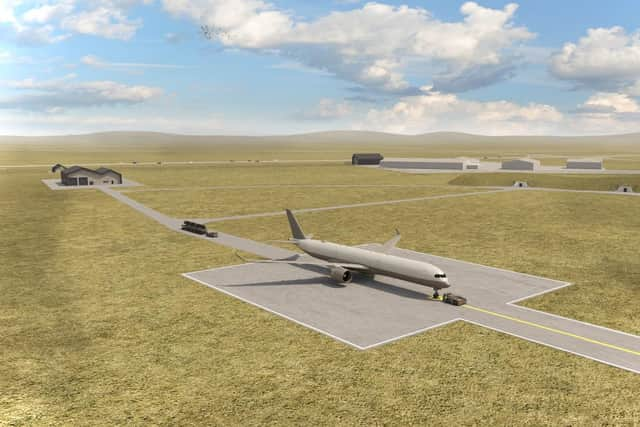Sustainable Space – a contradiction in terms or an example of what's possible? - Daniel Smith


With Scottish tech on the Moon, Mars and the recently launched James Webb Space Telescope, we've already built up an impressive amount of space heritage. The UK government has ambitions to become a launch nation, providing capability for rockets to reach orbit for the first time from European soil and catering to a burgeoning global market worth billions. With five developing spaceport projects and two rocket developers already building and testing, Scotland is ready to fill a gap with initial launches planned by this time next year.
Before conjuring up images of the Apollo programme or a SpaceX launch, it's worth pointing out that we are not talking about astronauts or Cape Canaveral style spaceports here. It's very much a case of small satellites on small launch vehicles lifting off from modest launch pads (or in the case of Prestwick, launched from an aircraft at high altitude).
Advertisement
Hide AdAdvertisement
Hide AdNot quite as exciting? Perhaps. But Scotland has an opportunity to lead in one key area of the fast-growing ‘new space’ market, with local space companies, universities and government agencies readied to catalyse collaborative efforts towards a new standard in the way space activity is carried out internationally. And that area relates to sustainability and environmental protection.


Now, before wondering if you're reading a delayed COP26 article, let me explain the elements at play. We have miniature satellites, with Glasgow replacing ships with spaceships and building more than any city outside of the US, ranging from the size of a smart phone to the size of a boxed bottle of malt whisky, designed to provide data to Earth from imagers that keep an eye on the planet and sensors that monitor gas levels.
We have rocket companies building transport for these satellites that are propelled by non-recyclable plastics or novel fuels producing up to 90 per cent less carbon. We have spaceports targeting the ultimate competitive differentiator, low cost and low carbon launch facilities.
Then, we have an established downstream data segment using information from those satellites in ways far more exciting than your increasingly frequent space launch. Skeptical? Did you know that when those little boxes are in orbit, they can track the movement of endangered species, monitor climate change, identify illegal mining, fishing or people tracking? Edinburgh’s Global Surface Intelligence has used satellite data to classify over 240 billion trees in the past year. While Musselburgh-based Astrosat assisted charities during lockdown by using space data to identify isolated communities, enabling volunteers to check on residents' physical and mental wellbeing.
Just think about that for a second – satellites protecting the environment, helping companies move towards NetZero and supporting mental wellbeing during the pandemic. We can get into the wonders of space-enabled internet, weather forecasting and navigation another time, but the benefits to be derived from satellite data are extensive, yet to be fully explored and limited only by our imagination.
“But what about the rubbish in space?” My 82 year-old grandmother recently asked (a true “pinch yourself” moment). Space junk and orbital debris spinning around Earth's atmosphere is a serious issue that mustn't be underestimated. Satellites are increasingly at risk, while the Space Station and other valuable space capabilities, including the Hubble Telescope, and have been struck by anthropogenic debris in the past.
At the moment when we think of environmental protection we tend to only consider terrestrial environments. However, a voluntary Task Force, set up by industry-led Space Scotland, is bringing together world experts and 'space environmentalists' in an attempt to ensure that Low Earth Orbit is considered worthy of protection and regulation in the same way as our lands and seas.
That same group is leading the charge towards the creation of the world's first Sustainability and NetZero Roadmap for a country's space sector, with support, guidance and impetus from both government and environmental groups, including Friends of the Earth Scotland and NatureScot.
Advertisement
Hide AdAdvertisement
Hide AdAs the dust settles on COP26, one thing is certain – every industry imaginable is facing up to its immediate responsibilities to measure and reduce its environmental impact, expediting our drive towards Net Zero. For that reason, the concept of 'sustainable space' cannot remain alien for much longer. The good news is that, like the sector itself, it is developing quickly and close to home.
Daniel Smith, Founder AstroAgency and Director of Space Scotland
Comments
Want to join the conversation? Please or to comment on this article.